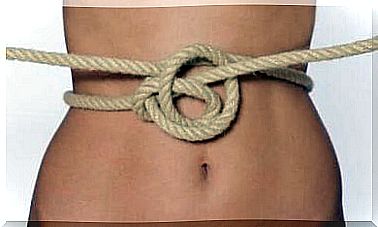5 Steps To Stop A Small Panic Attack
Panic attacks can be triggered at any time by any negative situation. Therefore, we should develop our own relaxation techniques to feel good and so weaken them

To stop a panic attack one should consult a doctor first. A panic attack is a frightening experience that is very debilitating for those affected. The causes that trigger this irrational fear, which is perceived as a heart attack, are not always known.
At that moment, control is completely lost.
Anyone can experience a panic attack at any time because no one is immune to fear and this unpredictable reaction.
Once this happens, more panic attacks usually follow. If this applies to you, don’t hesitate to seek professional help.
A psychologist can point out helpful strategies, but you have to implement them yourself in everyday life and try not to lose control.
Below we show you 5 simple ways in which you can face these situations.
But remember: It is ideal if everyone develops their own strategies and adapts them to their individual needs.
Step 1: Understanding Panic Attack
The first step towards a solution is always to understand the problem and its causes.
- Even if you feel and think the opposite in this situation: a panic attack is not fatal.
- Many suffer from it. This releases an excessive amount of adrenaline into the bloodstream.
- This condition is triggered by fear, which is irrational and the causes of which are not always clear.
It’s interesting to know that anxiety is a natural, instinctive defense system designed to protect us from danger.
This reaction ensured our survival in the past in order to escape the rough beers, but nowadays our true predator is sometimes our own life and its complexities.
2. Know the symptoms

The panic attack is like an explosion. Let’s take an example: Maria is a 42-year-old woman with a good job, three children and a life partner she loves.
- Apparently she doesn’t have any more problems other than her many duties. She always fulfilled them perfectly, but recently she had her first panic attack, which was followed by more. Sometimes before she goes to work, then again when she argues with her partner or children.
- Her father died two years ago and, although it was traumatic for her, she was sure that she had overcome it.
- But a month ago the pet also died and this is exactly what brought back the pain of the past.
As we can see, there are different things that create a very complex whole: stress, pressure, the loss of a family member and a pet …
Now Maria is suffering more and more attacks and her doctor has shown her the symptoms in order to be able to react:
- Racing heart
- Negative thoughts
- Choking or cardiac arrest feeling
- Difficulty breathing
- Abdominal pain
- dizziness
- sweat
3. Breathe

Breathing is very important in controlling and alleviating a panic attack.
We must not forget that the body reacts even before it is consciously aware of a danger.
Start by regulating your breathing to control the pace of the heart.
If you recognize the physical symptoms of a panic attack, find a quiet place and make sure that your clothes do not restrict you (take off your jacket, unbutton, sit down …).
- Then inhale for 5 seconds.
- Then hold your breath for 7 seconds.
- Then exhale for 8 seconds.
Repeat this exercise for about 5 minutes.
4. Get rid of negative thoughts

Negative thoughts spread during a panic attack. It’s like opening a door to let in thunder and lightning.
Learn to stop this situation. Control your mind by imagining a simple, calming picture:
- The negative thoughts are like burning candles.
- Take a breath and blow them out, one at a time, without letting one burn.
This will keep you breathing and slowing down those kinds of thoughts that make your anxiety worse.
5. Use calming phrases
Everyone must have their own. Having a range of calming phrases at your disposal is a simple and useful tool in these cases.
We’ll give you a few examples:
- “Everything is fine, I will calm down, my mind is in balance”.
- “Everything is over, I am safe, nothing will harm me”.
- “Take a break, stand still and take control, calm down now and take the reins in your hands”.
- “Nothing will happen to me, I am safe, just breathe, just take a breath and trust you”.
In conclusion, it should be said that these simple strategies, while basic, are usually not enough on their own. Get advice from an expert and develop a personal strategy that can help you.









